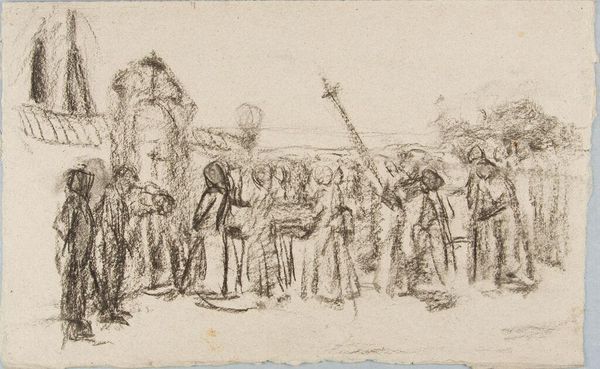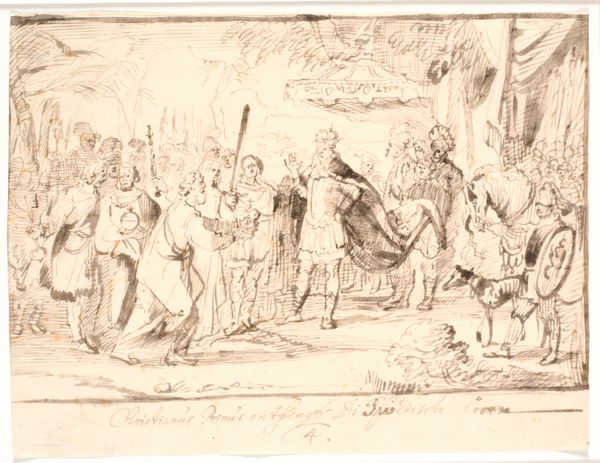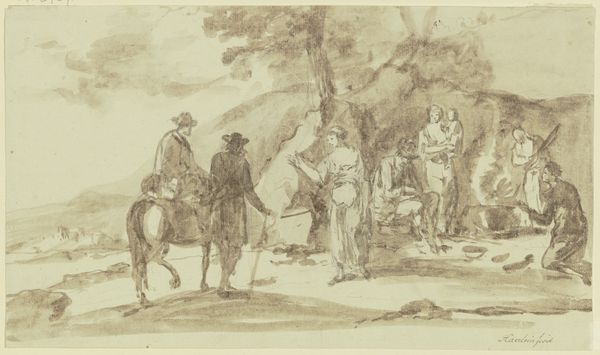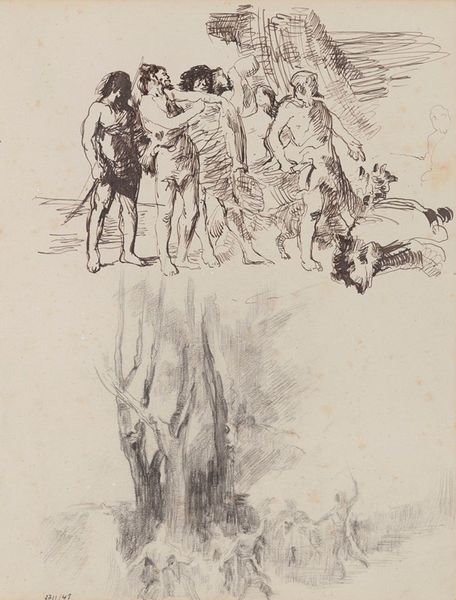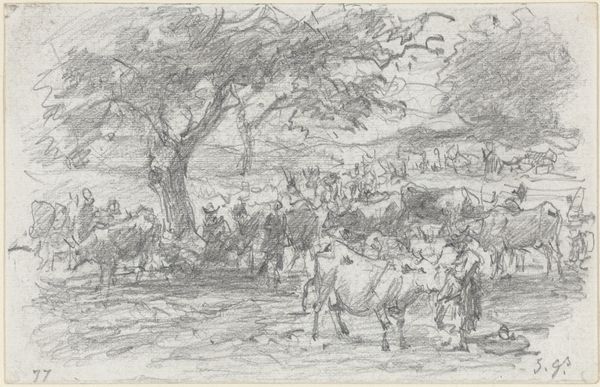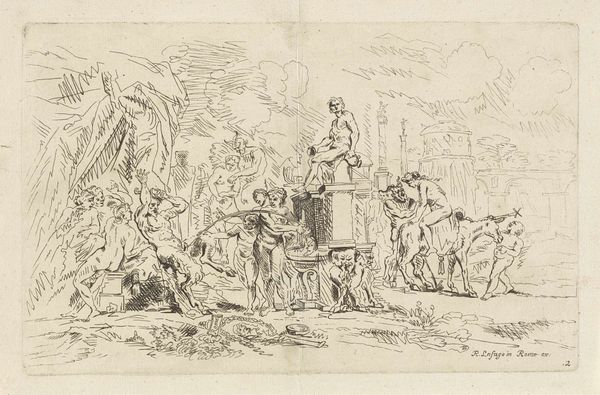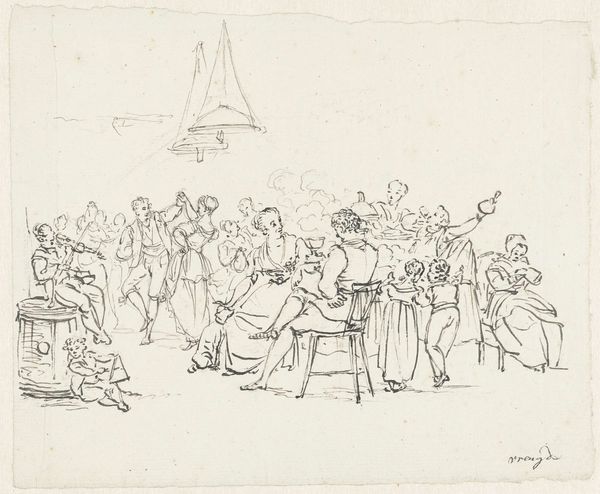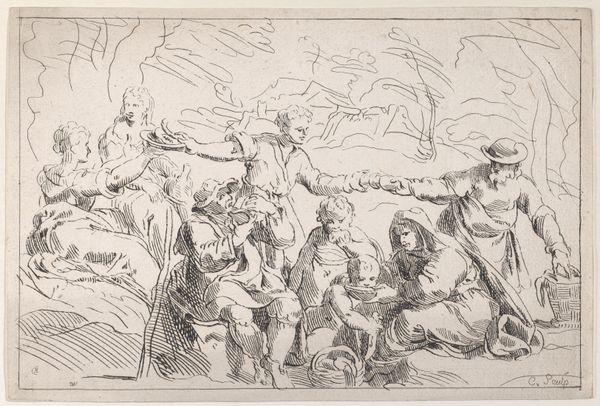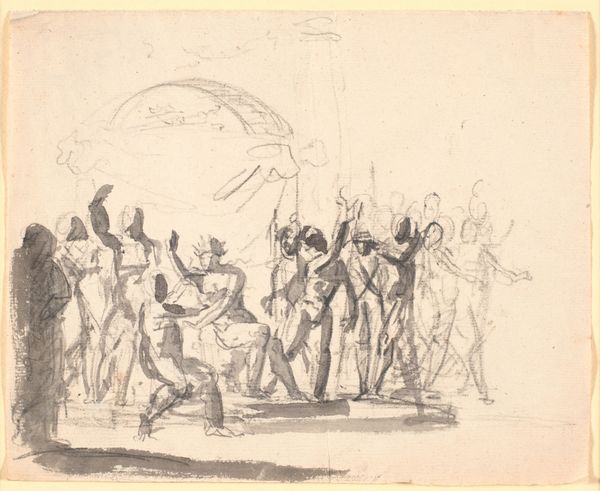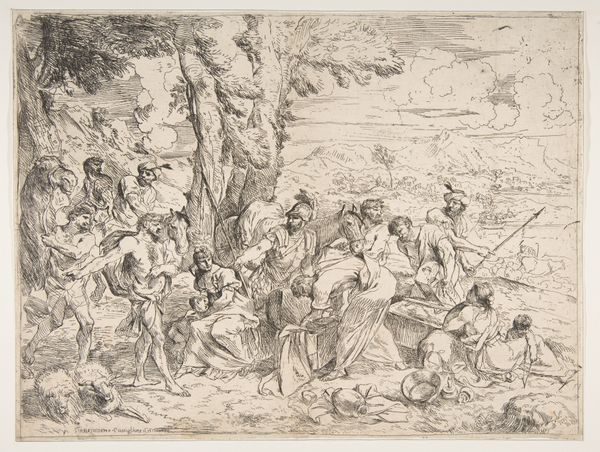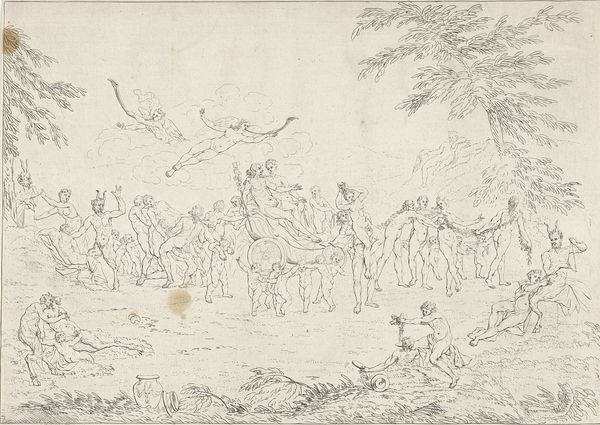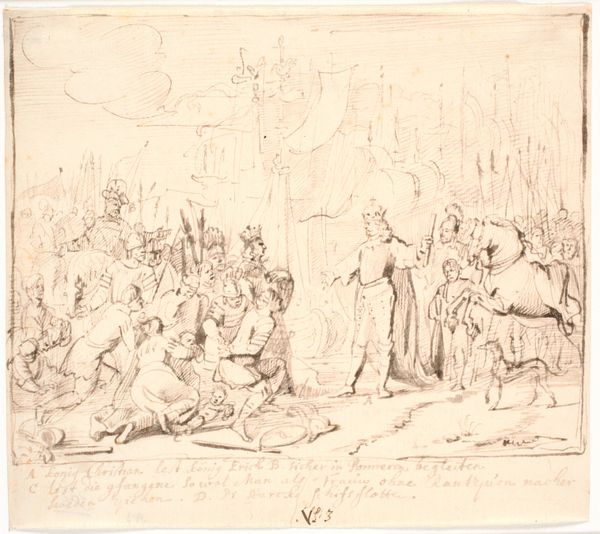
Copyright: Public Domain: Artvee
Editor: This is "Cafe on the Havel," a drawing by Max Liebermann from 1916. I’m really drawn to how quickly the scene seems captured, almost like a snapshot. It’s very immediate, informal. What strikes you most when you look at this work? Curator: Considering this was created during the First World War, its depiction of everyday life takes on a political dimension. Liebermann, a Jewish artist in Germany, faced increasing antisemitism. How does the scene of leisure, captured with what you aptly describe as immediacy, challenge or perhaps resist the anxieties of that period? Editor: That's a perspective I hadn't considered! It's easy to just see people relaxing, but maybe there’s a statement in portraying that normalcy. What do you make of the figures themselves? They seem quite generic. Curator: Indeed. And I wonder about the implications of that generality, the figures seemingly without distinct individual features. We can think about this work in the context of Liebermann’s larger oeuvre and his commitment to representing modern life. Is this facelessness, then, an aesthetic choice—a way to depict the collective experience and possibly hint at anxieties about individuality amidst the war, perhaps reflecting societal displacement or maybe the attempt of preserving 'Lebensraum'? Editor: That's fascinating. It makes me see the piece as more complex than just a simple cafe scene. Maybe it reflects some societal tension? Curator: Precisely. These images become part of a historical record of sorts. The cafe becomes more than just a place, it’s a mirror. Editor: Thanks, I'm going to view artwork very differently from now on! Curator: And I learned from your observation on the image’s immediacy; the impact and public interpretation of art are ongoing processes that require sharp insights like yours.
Comments
No comments
Be the first to comment and join the conversation on the ultimate creative platform.
